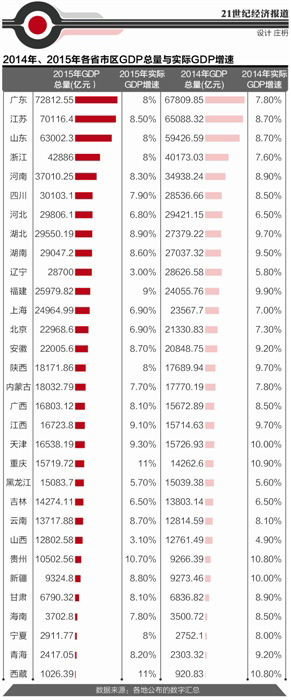Yearender-Xinhua Insight: Six key areas to watch on China's economy 2017
2017-01-01 08:30 | Xinhua |
Editor: Huang Mingrui
The Chinese economy has adapted to its "new normal" in 2016 amid rising concerns on GDP growth, supply-side structural reform, monetary policy, renminbi, and more. With the new year approaching, how will the economy fare in 2017? Here are six areas where experts call for close attention.
STABLE GROWTH
Despite remaining downward pressure, China's economic growth stabilized at 6.7 percent in the first three quarters of 2016, scotching rumors of a hard landing. In 2017, stabilizing the economy will still be prioritized by policymakers given the Communist Party of China will hold its 19th National Congress in Beijing during the second half of the year.
Economists predict a "soft landing" for China's economy, while noting that proactive fiscal policy will continue to play a positive role.
"China's steady growth will be guaranteed by both strong growth potential and effective macro-control policies," said Zhang Liqun, a researcher with the Development Research Center under the State Council.
In 2017, the growth of real estate investment and sales will slow, but the negative effect could be offset by infrastructure investment, said Robin Xing, chief China economist with Morgan Stanley.
SUPPLY-SIDE STRUCTURAL REFORM
China's Central Economic Work Conference has made "seeking progress while maintaining stability" the main theme for economic work in 2017, pledging to push for substantial progress in supply-side structural reform.
Economists believe China will improve its basic economic system and expedite reforms to delegate power, improve regulation and optimize services.
Yu Yongding, economist and former central bank adviser, stressed the importance of both supply-side structural reform and macro-control policies, saying China's stable growth may not be sustained without reforms, while the reforms will not be successful if they run out of control.
"Looking from a global perspective, China's advantage lies in its ample room for reforms," said Xing. In 2017, China is expected to launch fundamental reforms involving state-owned enterprises, taxation, finance, land, urbanization, social insurance, ecological civilization and the opening up policy.
PRUDENT MONETARY POLICY
China's monetary policy will be "prudent and neutral" in 2017, according to the Central Economic Work Conference.
Substantial monetary loosening is unlikely next year, while the focus of monetary policy may shift from supporting growth to preventing risks, economists said.
The central bank is expected to prefer tools such as reverse repos and medium-term lending facilities to ensure liquidity and avert excessive credit growth.
Huang Yiping, a central bank advisor, said China's monetary policy next year will be determined by the government's annual economic growth target, while expected rising inflation, higher U.S. interest rates and a weaker yuan will restrict room for loosening.
RMB PLUNGE UNLIKELY
The Chinese renminbi (RMB), or the yuan, has seen sharp falls since October, stoking market concerns. But economists ruled out the possibility of persistent slips in 2017, and believe China is capable of handling the impact, even if bigger-than-expected exchange rate changes occur.
There is no precedent for a country with the world's largest current account surplus, a leading GDP growth rate, abundant foreign exchange reserves and capital restrictions to see substantial depreciation of its currency, Yu said.
China's steady economic advance determines RMB will remain strong against other currencies, Zhang said, and considers recent weakness a correction of previous over-valuation. He expects RMB to end the losing streak by the end of the first half of 2017.
STABILIZING PROPERTY MARKET
A key driver of fixed-asset investment, China's property sector will be closely watched in 2017 due to its impact on economic growth.
Following tougher home-buying rules to contain speculation and hold surging prices in check, property sales will grow at a slower pace next year, said Zhang. However, he predicts China's urbanization will support housing demand and keep market growth at a steady level.
In 2017, China's top legislature is expected to pass the long-discussed property tax law, which will increase the cost of speculation, said Zhang Shuyu, a macroeconomic expert with the University of International Business and Economics.
In addition, the government will likely continue differentiated property policies to address market divergence between top-tier cities and smaller ones.
CHINESE ENGINE FOR GLOBAL ECONOMY
The world economy is troubled by a sluggish recovery, and faces an aging population and a widening wealth gap, among other long-term obstacles. In contrast, China, albeit experiencing a slowdown, has an enviable 6.5 to 7 percent GDP growth and continues to power global growth.
"Under this background, the world will increasingly rely on China to weather the hardships next year, and China will play an even bigger role in pushing forward globalization," Zhang Liqun said.
As the world's two largest economies, economic ties between China and the United States also deserve more attention. Huang Yiping noted that the U.S. President-elect Donald Trump's claims to name China a currency manipulator and impose hefty tariffs on its products will likely create enormous uncertainty and bring a negative influence.











